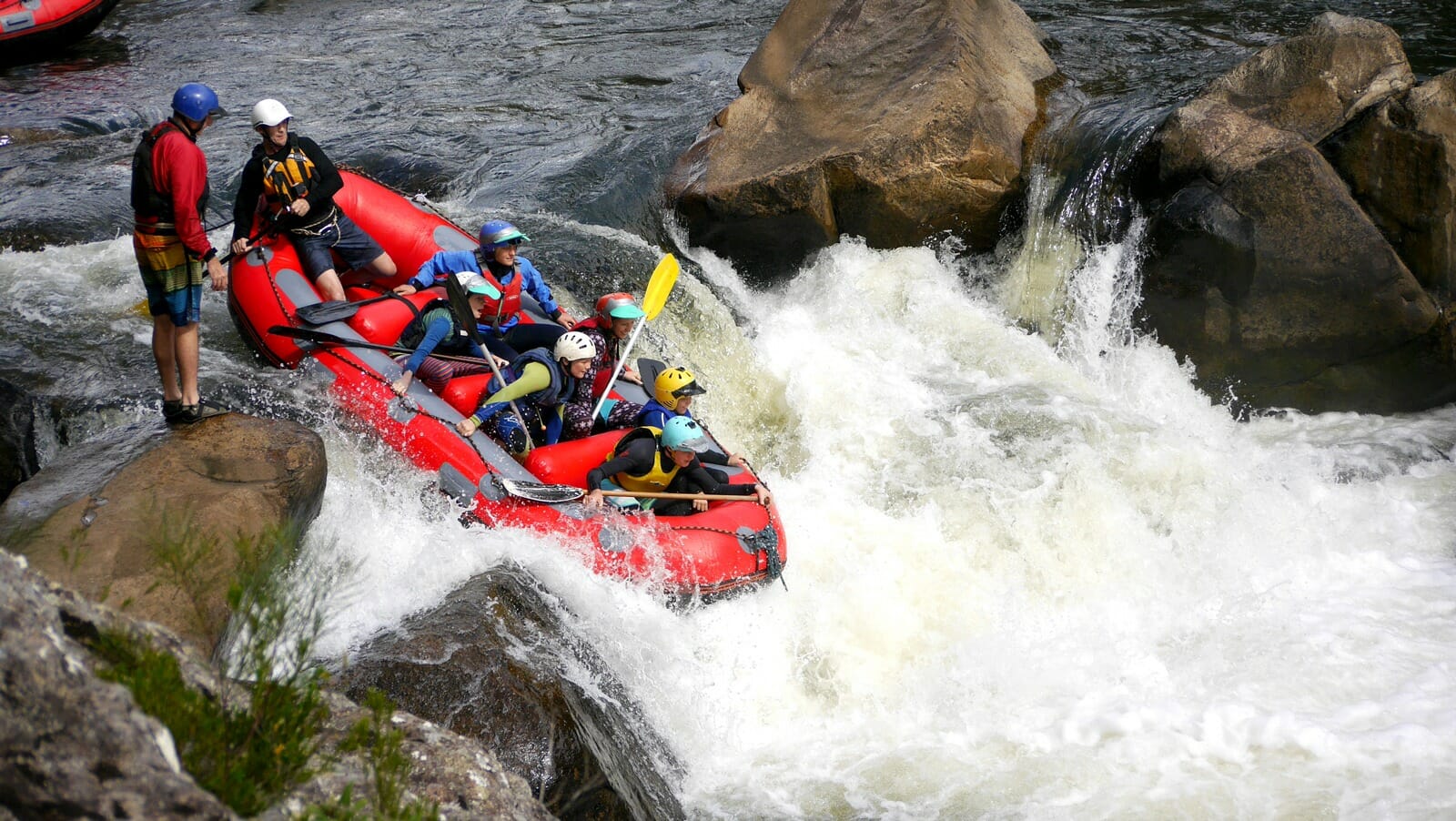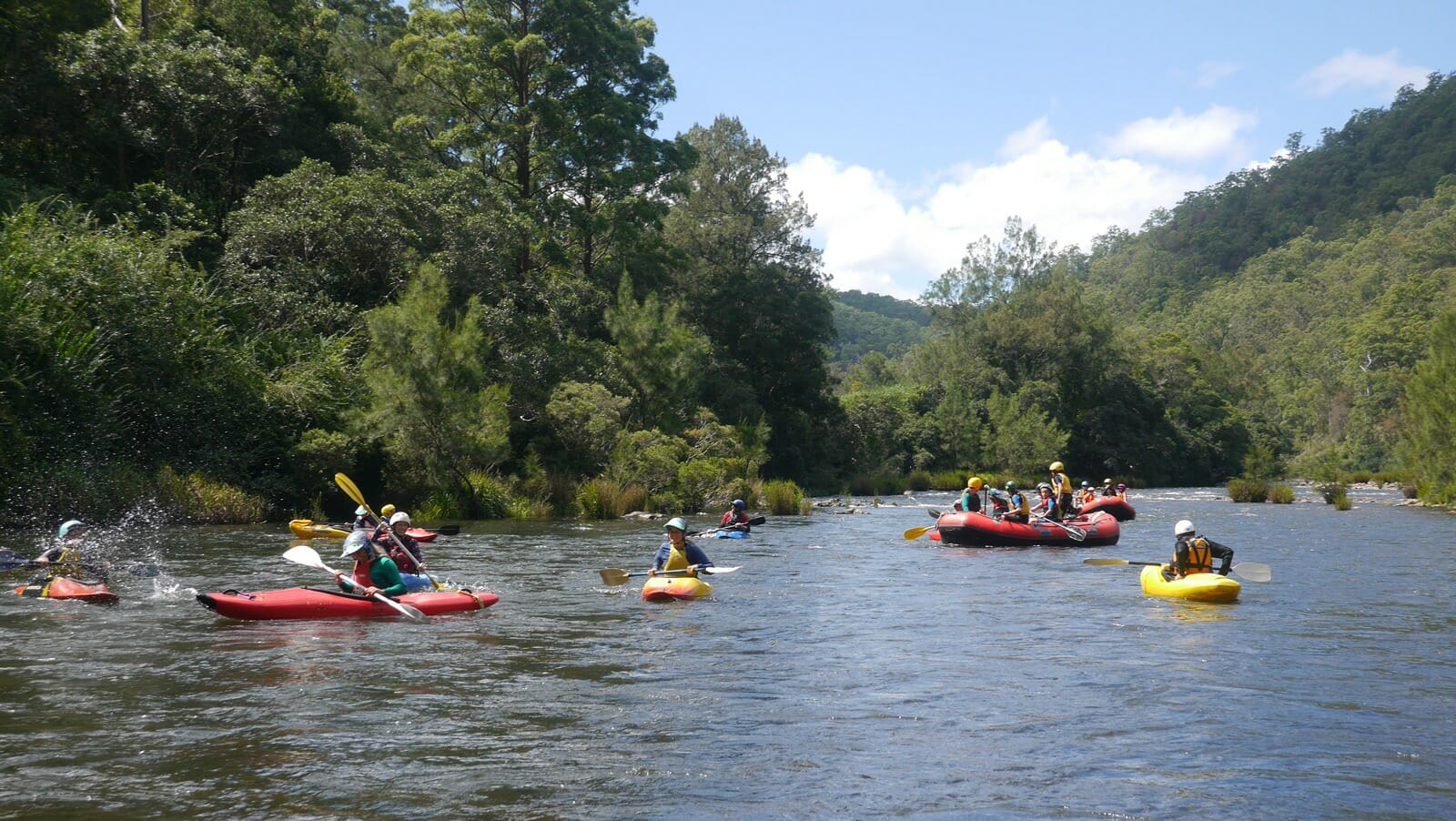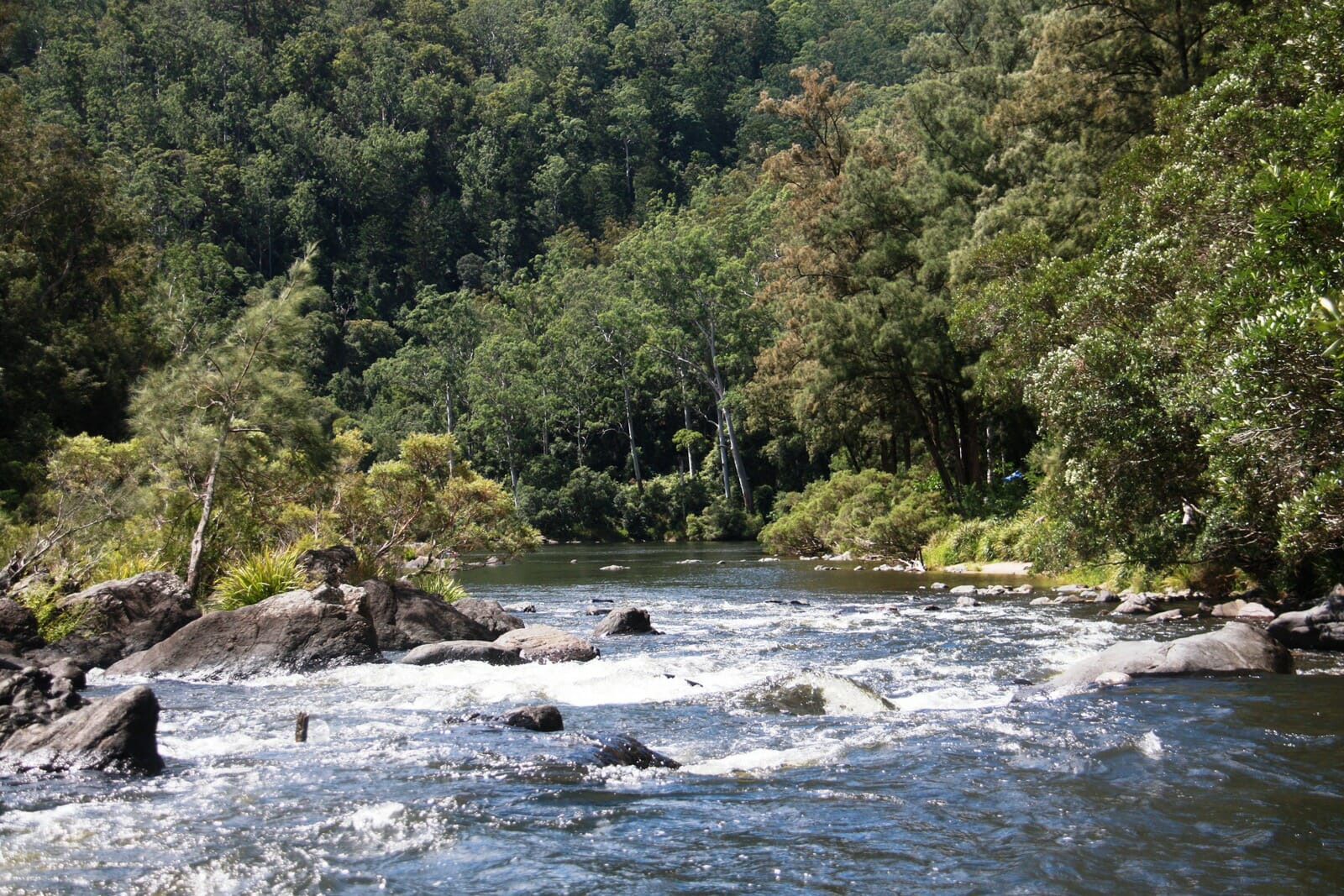The Clarence Canoe and Kayak Trail
At just under 200 kilometres, the Clarence Canoe and Kayak Trail is the longest white-water trip in Australia and includes three wild and stunningly beautiful river systems, the Nymboida, the Mann and the Clarence. The sheer length and diversity of the trail means there’s adventure levels to suit all types and plenty of access points to ‘dip in’ to the trail as desired.
I first kayaked the upper sections of the trail with my rafting guide boyfriend more than 20 years ago and whether it was the thrill of white water, the mind-blowing scenery or the heady beginnings of that relationship, this is a place I’ve come to associate with romance and adventure.
Fast forward a couple of decades and that boyfriend is now my husband and we’re spending a long weekend taking our three kids down one of Australia’s most spectacular rivers, the Nymboida.
There are ten families and a LOT of kids on this trip. Between us we have four ex-rafting guides, three rafts, more than a dozen kayaks and 17 excited and noisy kids. The youngest is five and the oldest is 16.
Day 1 – Codhole to The Junction – Rafts
The adults of the group and any child over the age of 11 are rafting the ‘top’ section today, the same section that the four guides commercially rafted back in the ‘90s.
A few years ago, when our firstborn children were suddenly old enough to go rafting, each guide purchased a white-water raft so there’s plenty of space for parents, kids and some much-loved blow-ins as well.
The Nymboida can be rafted at any time of year but after a spell of rain is best so the river is at a good level. If it’s too low, guides spend a lot of time picking tricky lines between exposed rocks. Fortunately, we’ve been blessed with perfect conditions; the sun is shining in a cloudless sky and there’s plenty of water in the river from recent rain. There are 25 rapids to navigate today, ranging in difficulty from grade two to four and it’s a going to be fast-paced and wet.

It’s hard to overstate the unique beauty of the Nymboida River. The rock walls loom right beside the rapids and rainforest drapes the hills. The rocks look to have been deliberately placed to make this perfect white-water and the dark pools at the bottom of the rapids swirl with cream-coloured foam. There are endless places to stop and play: cliffs to jump off, rapids to swim down and stretches of flat water for boat-to-boat combat and water fights.
One raft flips going down a rapid known as ‘S-Bend’, sending six teenagers and a guide (not mentioning any names) into the drink. It’s the scariest thing that happens to the kids all day but it’s also the thing they can’t stop talking and laughing about. It warms my heart to see the next generation of river rats having so much fun together.
One of my favourite places on the Nymboida River is The Gorge, a relatively slow-moving stretch of water that winds between towering granite cliffs. The appeal of the Nymboida lies in its inaccessibility as much as its beauty, for these are places you can only get to by boat.
On other trips, I’ve woken at dawn to watch platypus swimming and diving in the long, still pools. Today, not long after the rafts have rounded the bend taking their noisy passengers with them, the freshwater turtles will clamber back onto rocks to sun themselves and platypus will emerge from their hiding places in the riverbank.
At the end of the day everyone is saturated with happiness, sun and fun and the kids fall into bed in a state of exhausted bliss.
Day 2 – Black Mountain Road to just below Pitkin Falls – Rafts and kayaks
An old rafting guide once told me, “Kayaking is the drug and rafting is how you pay for it.”
The rafts are fabulous for getting little kids down the lower sections of the Nymboida and older kids down the technical top sections. But the kids soon realise that it’s more fun to be in your own kayak than a raft and so, on this day we have a dozen kayaks, three double inflatables and three support rafts. The rapids are not as extreme as the previous day, but we still have a strong adult to child ratio and an experienced kayaker leads each group of kids down the best lines, like a mother duck. The experienced adult also teaches the kids how to ferry glide, eddy in and out and how to perform a ‘wet exit’ in the event a kayak flips over.

The Big One – Pitkin Falls
The biggest rapid for today is Pitkin Falls. We all eddy out at the top to scout the rapid from the bank and to set up ‘cover’ – placing guides at various points down the rapid with throw bags (rescue ropes) in case someone ‘swims’ or comes out of their kayak.
Pitkin Falls is a grade three rapid so it’s more complicated than the previous rapids on the trip.
If you get the line wrong, there’s a good chance you’ll flip in the big circulating rapid at the bottom, known as a ‘hole’. Those who haven’t yet learned to Eskimo roll will have to wet exit from their kayak if they flip.
Once the kayakers have been prepped, they get back into their boats, ready for action. With the guides all in place, one of the adults goes down first by kayak to show the kids the correct line. Half way down is another adult who’ll shout advice as everyone comes down – ‘A little to the right!’, ‘Straighten up your boat!’, ‘Keep paddling!’. Further down, at the top of the last descent, another guide is in position, ready to do the same.
The kids are nervous. I’m nervous. My fear is multi-pronged: I’m scared for my daughter, who’s waiting in the top eddy with a white but determined face; I’m scared for all these other kids who I love so much, and I’m scared for myself because big rapids scare me.
In reality, there’s very little danger. Everyone on the river is wearing a life-jacket and helmet. The rapid pours into a deep, straight pool and there are two guides standing at the bottom with throw bags to haul in anyone who flips.

From a kayak, it’s impossible to see the bottom of the rapid from the top but the guide standing at the top of the rapid can communicate with those at the bottom. He blows a whistle when the coast is clear. One-by-one the eddy empties of paddlers. The whistle blows and my daughter grimaces at me and paddles into the flow of the river and is gone. Not long after, the whistle blows again so I assume she’s made it through without flipping.
I’m lucky last and I peal out into the current and send a little thought of gratitude to each of the guides as I pass them by. The last guide is my husband who yells something characteristically cheeky as I skirt the hole and make it out the other side.
All the kids greet me at the bottom. Two of them ended up flipping but were pulled back to shore – unscathed but very wet. They’re all euphoric, keen to tell their stories. My daughter says to me, at least five times in the next 24 hours, each time with a huge grin on her face, “I can’t believe I did it!”
Right there with you, sunshine.
My Clarence Valley has compiled an essential resource for people who want to raft, kayak or canoe themselves down various stretches of the Nymboida River, complete with maps, information about camping and planning tips: www.myclarencevalley.com/clarence-river-canoe-and-kayak-trail
If you’d rather go with professionals, the same site has details on a number of operators but you could get started with Exodus Adventures or Mann River Caravan Park



